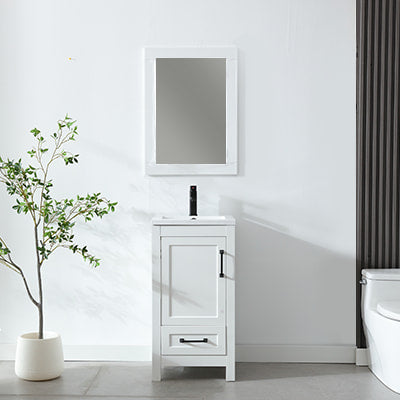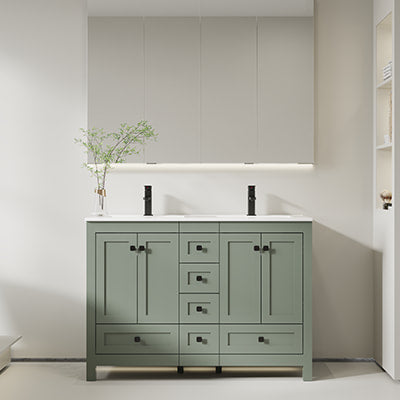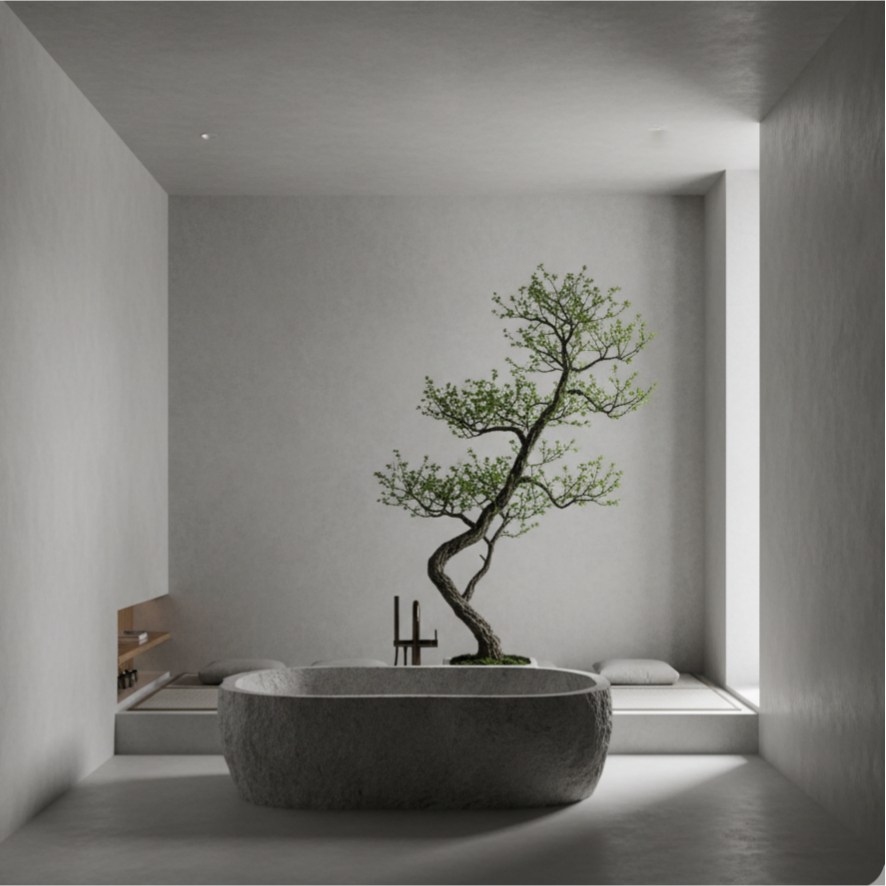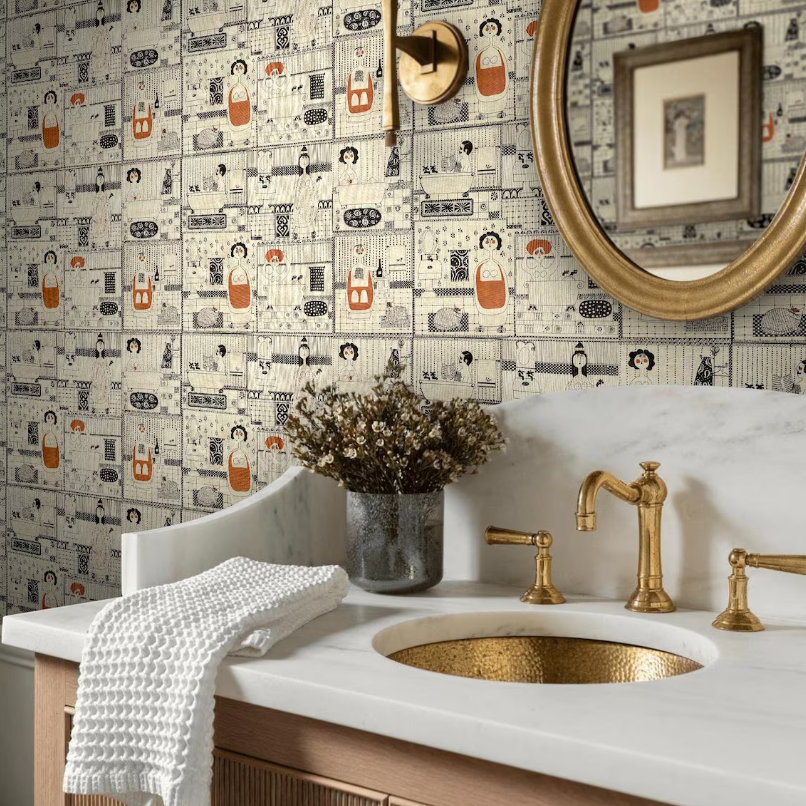In traditional home design, there has always been a clear boundary between bathrooms and living rooms—not just a physical wall, but also a psychological barrier of privacy. The bathroom is a secluded, functional space associated with water; the living room, by contrast, is an open, social area belonging to air and light. However, contemporary bathroom design concepts are quietly breaking down this boundary, creating a fluid, holistic living experience. As the element of water meets the element of air, and as privacy engages in dialogue with openness, a brand-new spatial philosophy is emerging.
Rethinking the Meaning of "Boundaries"
Why break the boundary between bathrooms and living rooms? This is not merely about pursuing novelty in design, but a profound response to modern lifestyles.
In today’s cities where living spaces are becoming increasingly compact, breaking spatial boundaries can create a more expansive visual experience. The removal of a single wall may double the sense of space in a small apartment. Meanwhile, modern people have developed a new understanding of self-acceptance and physical freedom—the bathroom is no longer a "shameful space" that needs to be hidden, but an important place for self-care and relaxation. Integrating the bathroom into living areas is an act of embracing and celebrating the natural state of the human body.
More importantly, this design reflects our pursuit of quality of life—daily bathing is no longer a routine chore done in a corner, but a sensory ritual that can be combined with reading, music, or the view outside the window. When a bathtub and a sofa share the same field of vision, the overall quality of life is elevated.
Design Strategies: How to Elegantly Blur Boundaries
Achieving a seamless integration of bathrooms and living rooms requires sophisticated design strategies, not just the simple removal of partition walls.
1. Creating Visual Continuity
The unification of materials and color tones is key. Extend the bathroom’s flooring material into the living area—using the same wood, microcement, or marble—to create a seamless visual experience. Choose coordinated color palettes to allow the two spaces to merge naturally.

Glass partitions are an excellent choice. Large panels of tempered glass or reeded glass (commonly known as "rain glass") serve as dividers, maintaining visual transparency while ensuring privacy when needed (via switchable frosted glass or curtains). This "adjustable transparency" allows the space to switch freely between different modes.
2. Ingenious Layout of Functional Zones
Treating the bathtub as a spatial focal point is a common and effective approach. Place a freestanding bathtub near a window or in the center of the room, turning it into a sculptural element of the space rather than a hidden fixture.

Creating a "transition zone" is also important. Install a buffer area between the bathroom and living room—it could be a low wall with a double-sided fireplace, a half-height bookshelf, or an elegant vanity. These zones have ambiguous functions and naturally connect the two spaces.
3. Meticulous Design of Sensory Experience
The use of light is crucial. Allow natural light to spread evenly throughout the space through skylights, recessed light strips, and large windows. Consider installing dimmable lighting systems in different areas to meet the varying needs of day and night.

Introducing natural elements enhances spatial harmony. Indoor plants, small indoor water features, and the natural grain of stone—these elements blur the boundary between indoor and outdoor spaces, while allowing the theme of "water and air" to resonate naturally within the space.
4. Smart Solutions for Privacy
While openness is pursued, privacy still needs to be protected. Movable dividers such as sliding track doors or rotating screens enable flexible spatial division; raised platforms or sunken bathtubs suggest functional zoning through height changes without blocking the line of sight.

Strategic placement of sanitary fixtures is also key. Typically, shower areas and toilets can be positioned in relatively concealed locations, while bathtubs and vanities are more suitable for open designs—striking a balance between privacy and openness.
Style Guide: Exploring Five Styles of Integrated Beauty
- Minimalist Zen Style: Unify walls and floors with microcement, paired with a freestanding stone bathtub to create a serene space reminiscent of ink wash paintings. A single potted tree serves as a visual focal point, connecting the bathing area and the resting area.

- Industrial Retro Style: Preserve the original concrete ceiling and walls, using black metal-framed glass for division. A vintage clawfoot bathtub is placed alongside a leather sofa, creating a unique aesthetic that contrasts ruggedness with refinement.

- Tropical Resort Style: Make extensive use of living plant walls, rattan furniture, and natural wood; place the bathtub in an "indoor garden" connected to the living area via glass doors, turning every day into a vacation experience.

- Japanese Wabi-Sabi Style: Use natural wood, rice paper screens, and handcrafted ceramic tiles, embracing the beauty of imperfection. A deep-soak bathtub is adjacent to a tatami resting area, creating an atmosphere for contemplation and meditation.

- Modern Luxury Style: Extend marble flooring from the bathroom all the way to the living room; crystal chandeliers and a freestanding metal bathtub complement each other, creating an exquisite experience similar to a hotel suite.

Challenges and Considerations: Finding Balance Between Ideal and Reality
Of course, this type of design faces many challenges. The redesign of drainage systems, moisture and water-proofing treatments, and the design of heating systems all require professional consideration. Maintaining tidiness becomes particularly important in open spaces—built-in storage solutions and a minimalist philosophy of life are almost essential.
At the same time, it is necessary to consider the diverse needs of family members and potential visits from guests. Smart glass technology and clever curtain systems can instantly restore privacy when needed, allowing the space to adapt to various life scenarios.
Conclusion: Space as a Cotainer for Life
Breaking the boundary between bathrooms and living rooms is essentially a reimagining of lifestyle. It invites us to reflect: What is true comfort? What constitutes necessary privacy? How can we live in harmony with our bodies and senses?
This design is not just about aesthetics, but an expression of a life philosophy—life is a fluid whole, not fragmented parts. When you can see the stars outside the window while bathing, hear the gentle sound of running water while lying on the sofa, and experience no abrupt transitions between spaces, our life experience becomes more complete and authentic.
In this integrated space, water meets air, function coexists with poetry, and every day becomes a carefully designed life ritual. This may well be the direction of future home design: no longer a simple collection of rooms, but a seamless journey of experience, carefully arranged according to the rhythm of our lives.





